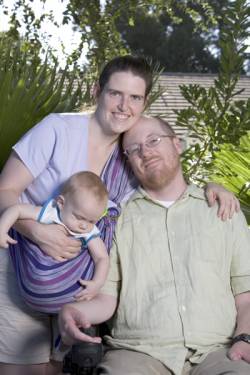Taylor Hines
My Personal Story
By: Taylor Hines, 31, Goleta, CA
HIBM patient since 1997
PhD Student (History and Sociology of American Religion)
“I was originally diagnosed with a form of muscular dystrophy: they weren't exactly sure what it was and told me that little was known about my prognosis. I tried to convince myself that it wouldn’t get any worse, but soon after that I started falling more frequently. I needed leg braces to walk, a cane and then crutches. I still had no idea what was going on as I made periodic trips back to the neurologists for more tests, more consultations and more shrugged shoulders.
I took the first disability studies course ever offered at my college, taught by a professor who had polio as a child. The course helped me become more familiar with the experience of disability and introduced me to the world of American “disability culture” with its politics, its complaints, its sense of justice and even its sense of humor. When I graduated, I went to work for the National Organization on Disability in Washington, D.C., where I gained a strong sense of the dignity and the possibilities that all people with disabilities possess.
Still, I didn't know what exactly was going on with my own body until one day I came across the ARM website while surfing the web. Through the site I got in touch with Dr. Daniel Darvish who was able to confirm that I had HIBM.
It was a relief to finally know what was happening to my body. Through ARM I learned not only about the scientific research they were encouraging and organizing around the world, but also about how Drs. Babak and Daniel Darvish lived their lives with HIBM.
Now, at 31 years old, I am a graduate student at UC Santa Barbara, studying the history and sociology of American religion. I have a wonderful wife, Martha and we have a beautiful 7 1/2 month old son named Alexander who crawls and climbs all around my wheelchair and is learning to walk just as I am learning how not to. My greatest joy is my son’s smile… nothing else really compares.
I have a great deal of hope about our future, though I'll admit that sometimes it still scares me. I have hope that soon we'll have a treatment for HIBM, one that will at least help stop the progression I've seen in my own body, for both myself and for all the other people in the world who now face, or will face, the many challenges of this disease.”
